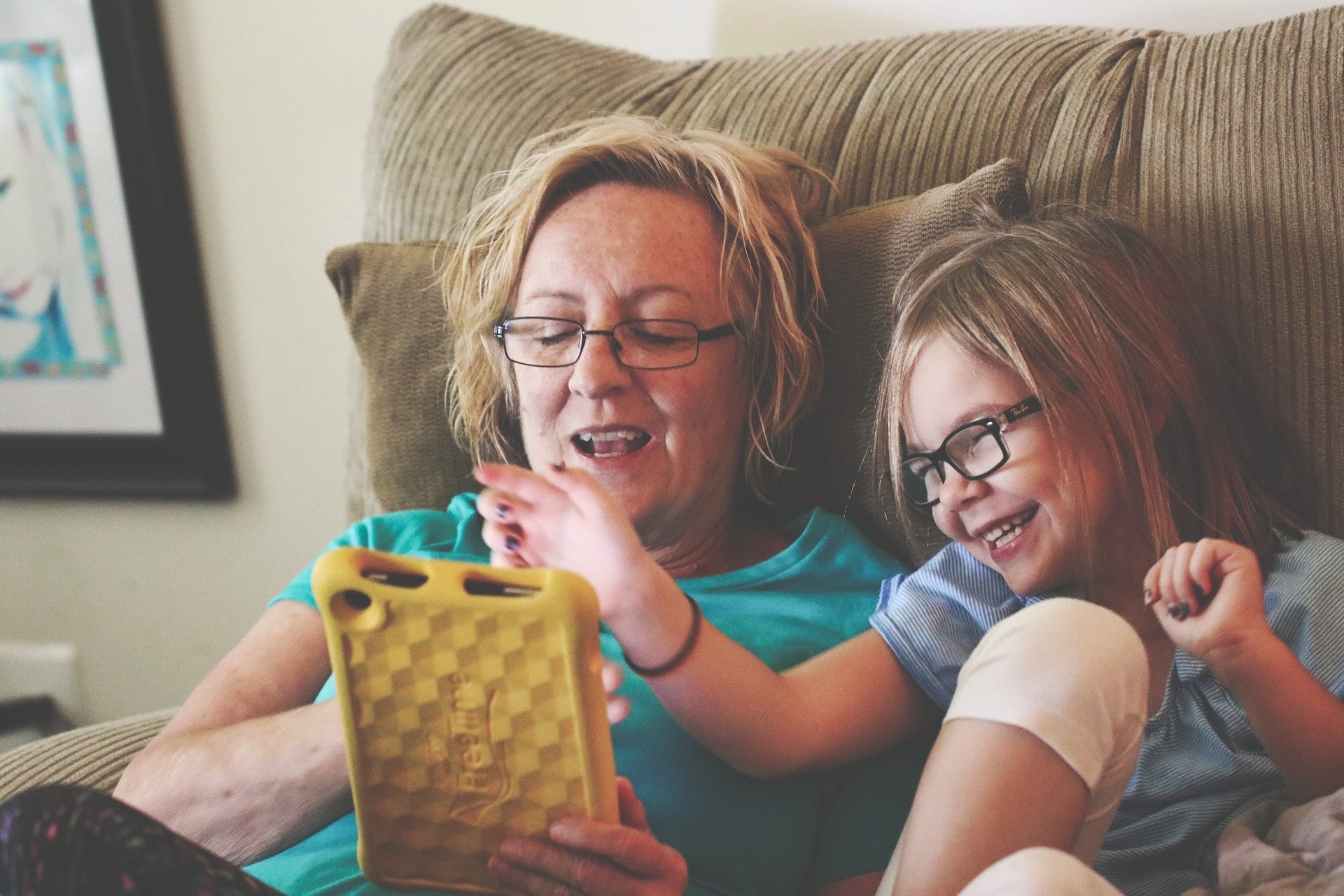A speech generating device (SGD) is an electronic device that can help individuals with severe speech impairments communicate. At Emerge, we’ve seen many of our clients learn the power of communication and get excited being able to communicate clearly.
Getting a SGD can be a confusing process, but our staff is here to help support our clients and their families throughout the process. In this blog post, we have a complied a list of common caregiver questions that we have received about speech generating devices and provided thorough answers from an Emerge speech language pathologist!

What are the different types of SGDs?
At Emerge, we most commonly use devices from PRC, Saltillo, or TobiiDynavox, companies that manufacture SGDs. Below are the most common SGDs we recommend. While all of these devices have multiple vocabulary systems available within the device, the vocabularies we most commonly recommend are listed.
- Made by PRC
- Sizes: 800 (8” screen), 1000 (10” screen), 1400 (14” screen)
- Vocabulary: LAMP Words for Life
- Made by Saltillo
- Sizes: 5 (5” screen), 8 (8” screen), 10 (10” screen), 12 (12” screen)
- Vocabulary: WordPower
- Made by TobiiDynavox
- Size: 10” screen
- Vocabulary: Snap Core First
What is the difference between the different vocabulary systems?
LAMP Words for Life: LAMP stands for Language Acquisition through Motor Planning. It uses consistent motor plans to access vocabulary. It was originally developed for children with autism, but can be used for children with a wide variety of diagnoses.
WordPower: WordPower uses core words to help predict and facilitate sentence generation. The vocabulary is largely organized into logical categories.
Snap Core First: Similar to WordPower, Snap Core Fist is categorically organized and uses sentence prediction to facilitate sentence generation.
How do I know which SGD/vocabulary system is best for me or my child?
Your speech therapist will trial at least 3 different devices/vocabularies with you/your child to find the best fit. We will be happy to discuss all the pros and cons of each of the devices and educate you on how to customize the device for yourself/your child. The local representatives of the SGD manufacturing companies have also offered to do training with families and schools on the devices.
Does a child need to start with a form of low-tech AAC like PECS or PODD prior to using a SGD?
No. In fact, there are some kids who do not do well with low-tech, but tend to gravitate more to SGDs because they have experience with tablets and smartphones.
Will using an SGD hinder my child from communicating verbally?
No. A benefit of SGDs compared to low-tech AAC is that SGDs provide a verbal model through computerized speech of the words or phrases children generate on the device. In our experience with using SGDs at Emerge, many kids have learned to speak verbally by listening to their SGD model the verbal speech for them. Additionally, our speech therapists will be happy to continue to work on goals for verbal speech in addition to using the SGD for communication.
What if I have/my child has physical impairments?
At Emerge, our speech therapists are fortunate to have occupational and physical therapists to collaborate with to find the best method of access. While most people will access their AAC/SGD through direct selection (pointing with their finger), there is a wide variety of access methods including partner assisted scanning, eye gaze, head pointing, and switch access. Additionally, other adjustments may be made to help facilitate direct selection as it is usually the fastest access method. Mounts are also available for clients in wheelchairs.

0 Comments